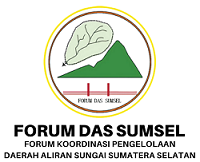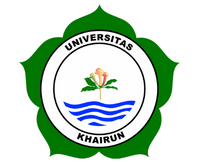Arthropod Population in The Canopy of Cucumber (Cucumis sativus L.) Plants in Talang Ilir Hamlet, Banyuasin Regency
Abstract
Keywords
Full Text:
PDFReferences
Arcala, F.B. 2021. “Morphological and molecular characterization of fungal entomopathogen Isaria fumosorosea (Wize) Brown and Smith as bioinsecticide against cucurbit leafworm, Diaphania indica Saunders (Lepidoptera: Pyralidae), in cucumber”. International Journal of Agriculture, Forestry, and Life Sciences, Vol. 5 No.1 pp.106-112.
Aritonang, S.P., Panjaitan, E., and Tondang, F.P. 2018. “Cucumber plants (Cucumis sativus L.) growth and crop yield of chicken manure fertilized with plant spacing”. IOP Conference Series: Earth Environmental Science. 130. doi:10.1088/1755-1315/130/1/012045
Atibita, E.N., Djieto-Lordon, C., and Fernand-Nestor Tchuenguem Fohouo, F.T. 2020. “Insects associated with cucumbers (Cucumis sativus L.) at Bamunka-Ndop (North-West Region, Cameroon)”. Journal of Advances in Agriculture. 11 (2020): 146-159. https://doi.org/10.24297/jaa.v11i.8840
Azad, A.K., Sardar, A., Yesmin, N., Rahman, M., and Islam, S. 2013. “Eco-Friendly Pest Control in Cucumber (Cucumis sativa L.) Field with Botanical Pesticides”. Natural Resources. 4(5): 404-409. http://dx.doi.org/10.4236/nr.2013.45050
Borror, D.J., Triplehorn, C.A., and Jhonson, N.F. 1996. “Pengenalan Pelajaran Serangga”. Yogyakarta: Gadjah Mada University Press.
Hamzah, A.A., and Norsyazwina, M.R. 2020. “Crop damages by armyworm (Spodoptera litura F.) in Malaysia and control tactics”. Asian Journal of Fundamental and Applied Sciences. 1(4):13-19. http://myjms.mohe.gov.my/index.php/ajfas
Grumet, R., Lin, Y.C., Cadman, S.R., and Malik, A. 2022. “Morphological and genetic diversity of cucumber (Cucumis sativus L.) fruit development”. Plant. 12(1): 1-21. https://doi.org/10.3390/plants12010023
Guedes, R.N.C., Smagghe, G., Stark, J.D., and Desneux, N. 2016. “Pesticide-induced stress in arthropod pests for optimized integrated pest management programs”. Annual Review of Entomology. 61: 43-62. https://doi.org/10.1146/annurev-ento-010715-023646
Gumelar, A.I., dan Wiguna, A. 2022. “Respons tanaman mentimun (Cucumis sativus L.) kultivar Mars terhadap kombinasi dosis pupuk organik dan anorganik”. Savana Cendana. 8 (2): 43-46. https://doi.org/10.32938/sc.v8i02.1961
Handayani, F., Maretik, Tojang, D., and Mustafa R. 2023. “The growth response and yield of cucumber (Cucumis sativus L.) fertilizing in various doses”. Jurnal Biologi Tropis. 23 (1) :9-14.http://dx.doi.org/10.29303/jbt.v23i1.4341
Kalshoven, L.G.E. 1981. “The Pests of Cops in Indonesia”. Jakarta: PT. Ichtiar Baru. 710 hal.
Khoirunnisa, F.A., Fuskhah, E., dan Widjajanto, D.W. 2019. “Pertumbuhan dan produksi tanaman mentimun (Cucumis sativus L.) yang dibudidayakan dengan menggunakan berbagai jenis mulsa dan dosis pupuk kandang kambing yang berbeda”. Jurnal Pertanian Tropik. 6 (3): 383- 392. https://talenta.usu.ac.id/jpt
Kolfschoten, L.V., Dück, L., Lind, M.I., and Jandér, K.C. 2022. “Rising temperatures threaten pollinators of fig trees-Keystone resources of tropical forests”. Ecology and Evolution. 12 (9): 1-14. https://doi.org/10.1002/ece3.9311
Kusuma, R.M., and Windriyanti, W. 2022. “Effective behavior of insects pollinators of flowers in gadung mango clone 21 variety”. Jurnal Ilmu Pertanian Indonesia (JIPI). 27 (4): 596-605. http://journal.ipb.ac.id/index.php/JIPI DOI: 10.18343/jipi.27.4.596
Li, Y.Y., Chen, J.J., Liu, M.Y., He, W.W., Reynolds, J.A., Wang, Y.N., Wang, M.Q., and Zhang, L.S. 2022. “Enhanced degradation of juvenile hormone promotes reproductive diapause in the predatory ladybeetle Coccinella Septempunctata”. Frontiers in Physiology 13: 1-14. https://doi.org/10.3389/fphys.2022.877153
Majeed, A.J. 2021. “Cucumber (Cucumis sativus L.) Growth and nutrient content response to applications of leonardite and phosphorus fertilizer”. Journal of Agricultural Science and Agriculture Engineering. 5 (1): 1-12. https://doi.org/10.55173/agriscience.v5i1.60
Mallick, P.K. 2022. “Evaluating potential importance of cucumber (Cucumis sativus L.- Cucurbitaceae): a brief review”. International Journal of Applied Sciences and Biotechnology 10 (1): 12-15. https://doi.org/10.3126/ijasbt.v10i1.44152
McCravy, K.W. 2018. “A review of sampling and monitoring methods for beneficial arthropods in agroecosystems”. Insects. 9(4):1-27. https://doi.org/10.3390/insects9040170
Padang, A.A.S., Herawati, R., Barchia, M.F., Heru Widiyono, H., and Simanihuruk, B.W. 2023. "Cucumber (Cucumis sativus L.) growth and yield as respons by dolomite and potassium application on peat soil”. TERRA: Journal of Land Restoration. 6(1):12-18. https://doi.org/10.31186/terra.6.1.12-18
Painkra, K.L., Kerketta, A., and Jha, M.K. 2019. “Pest management of cucurbits”. Journal of Entomology and Zoology Studies, Vol. 7 No. 2 pp. 1371-1373.
Patel, C., and Panigrahi, J. 2019. “Starch glucose coating-induced postharvest shelf-life extension of cucumber”. Food Chemistry. 288: 208-214. https://doi.org/10.1016/j.foodchem.2019.02.123
Rahmah, A., Pramudi, M.I., Aidawati, N., and Aphrodyanti, L. 2023. “Effect of extract euphorbia hirta linn. against leaf and fruit pests on plants cucumber (Cucumis sativus Linn.)”. International Journal of Environment, Agriculture and Biotechnology. 8(2):121-126. https://dx.doi.org/10.22161/ijeab.82.11
Rohman, F., Efendi, M.A. dan Andrini, L.R. 2019. “Bioekologi Kupu-Kupu”.Malang: Universitas Negeri Malang. 141 hal.
Sallam, B.N., Tao Lu, T., Yu, H., Li, Q, Sarfraz, Z., Iqbal, M.S., Khan, S., Wang, H., Liu, P., and Jiang, W. 2021. “Productivity enhancement of cucumber (Cucumis sativus L.) through optimized use of poultry manure and mineral fertilizers under greenhouse cultivation”. Horticulturae. 7 (256): 1-14. https://doi.org/10.3390/horticulturae7080256
Samad, S., Shubzan A., Mahmud, Sugeng Haryanto, S., Abdullah, H., and Ahmad, N. 2022. “Vegetable waste compost against growth and production of cucumber (Cucumis sativus L)”. Eduvest–Journal of Universal Studies, Vol. 2 No. 9 pp. 1793-1799.
Sánchez-Bayo, F. 2021. “Indirect effect of pesticides on insects and other arthropods”. Toxics. 9 (8): 1-22. https://doi.org/10.3390/toxics9080177
Sari, T.A., Chandra, B., and Rivai, H. 2021. “Overview of traditional use, phytochemical and pharmacological activities of cucumber (Cucumis sativus L.)”. International Journal of Pharmaceutical Sciences and Medicine. 6 (3): 39-49. http://dx.doi.org/10.47760/ijpsm.2021.v06i03.004
Schellhorn, N.A., Bianchi, F.J.J.A., and Hsu, C.L. 2014. “Movement of entomophagous arthropods in agricultural landscapes: links to pest suppression”. Annual Review of Entomology. 59: 559-581. https://doi.org/10.1146/annurev-ento-011613-161952
Severgnini, L., Ducatti, R.D.B., Morais, D.C.O., Tironi, S.P., Radünz, A.L., and Tramontin, M.A. 2019. “Entomofaunistic diversity of arthropods in cucumber farming (Cucumis sativus L.)”. Acta Biológica Catarinense, Vol. 6 No. 2 pp. 76-86.
Solbreck, C., Knape, J., and Forare, J. 2022. “Role of weather and other factors in the dynamics of a low-density insect population”. Ecology and Evolution. 12 (9): 1-11. https://doi.org/10.1002/ece3.9261
Srinivas, T.G., Ravi, G., Balakrishnan, N., Raja, D.L., and Kennady, N.R. 2022. “Distribution of insects pests and pesticide usage pattern on cucumber in Southern districts of Tamil Nadu”. The Pharma Innovation Journal, Vol. 11 No. 8 pp. 1695-1700.
Sturm, R. 2018. “Distribution patterns of selected insect populations on their host plants-an ecological study”. Linzer Biologische Beiträge, Vol. 50 No. 1 pp. 845-854.
Tarakini, G., Chemura, A., Tarakini, T., and Musundire, R. 2021. “Drivers of diversity and community structure of bees in an agroecological region of Zimbabwe”. Ecology and Evolution. 11 (11): 6415–6426. https://doi.org/10.1002/ece3.7492
Wolz, M., Klockmann, M., Schmitz, T., Pekár, S., Bonte, D., and Gabriele Uhl, G. 2020. “Dispersal and life-history traits in a spider with rapid range expansion”. Movement Ecology. 8 (2): 1-11. https://doi.org/10.1186/s40462-019-0182-4
Wu, J., Ge, L., Liu, F., Song, Q., and Stanley, D. 2020. “Pesticide-induced planthopper population resurgence in rice cropping systems”. Annual Review of Entomology. 65:409-429. https://doi.org/10.1146/annurev-ento-011019-025215
DOI: https://doi.org/10.32502/jgsa.v4i1.6871
Refbacks
- There are currently no refbacks.
Indexed by:
Journal of Global Sustainable Agriculture
Diterbitkan oleh Fakultas Pertanian, Universitas Muhammadiyah Palembang
Contact Person:
Rika Puspita Sari, M.Si (+62 813-7490-0341)
Klinik Publikasi Pertanian
Faculty of Agriculture, Universitas Muhamamdiyah Palembang
JL. Jend. A. Yani 13 Ulu Palembang, South Sumatra, Indonesia
Tel. (+62)711-511731; Email: kppfpump@gmail.com; Website: https://jurnal.um-palembang.ac.id/JGSA

This work is licensed under a Creative Commons Attribution 4.0 International License.







1.png)

13.png)





